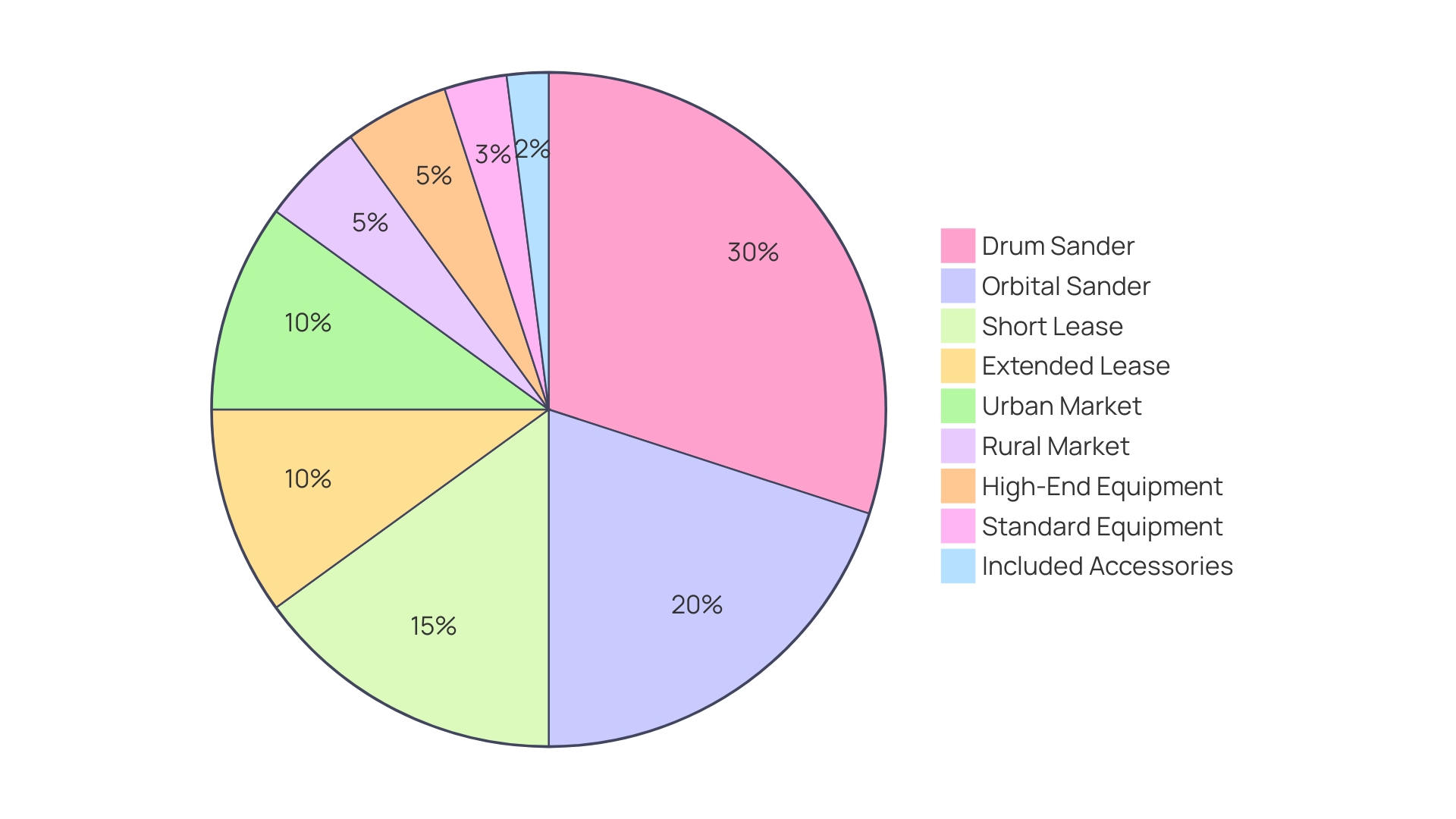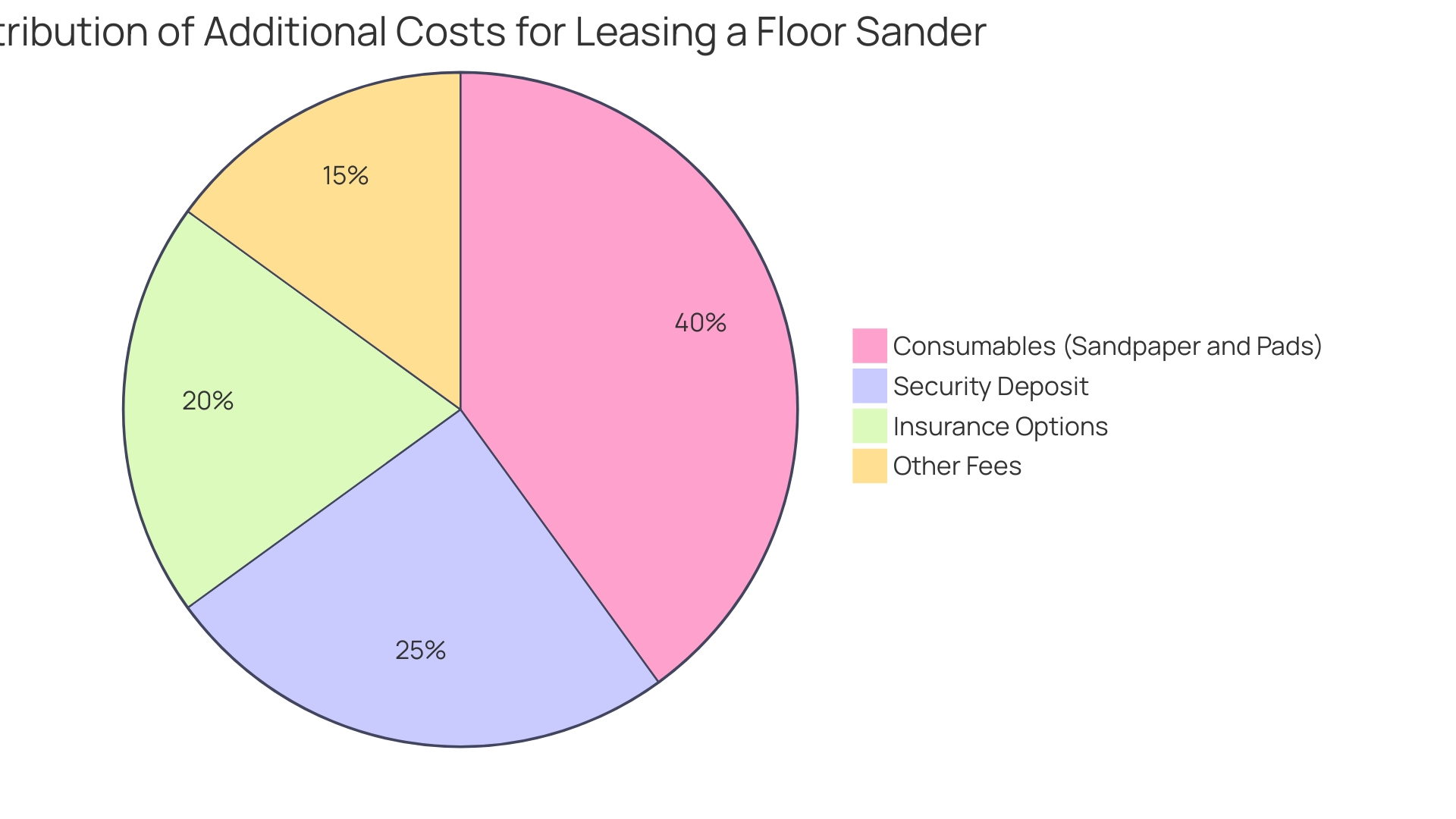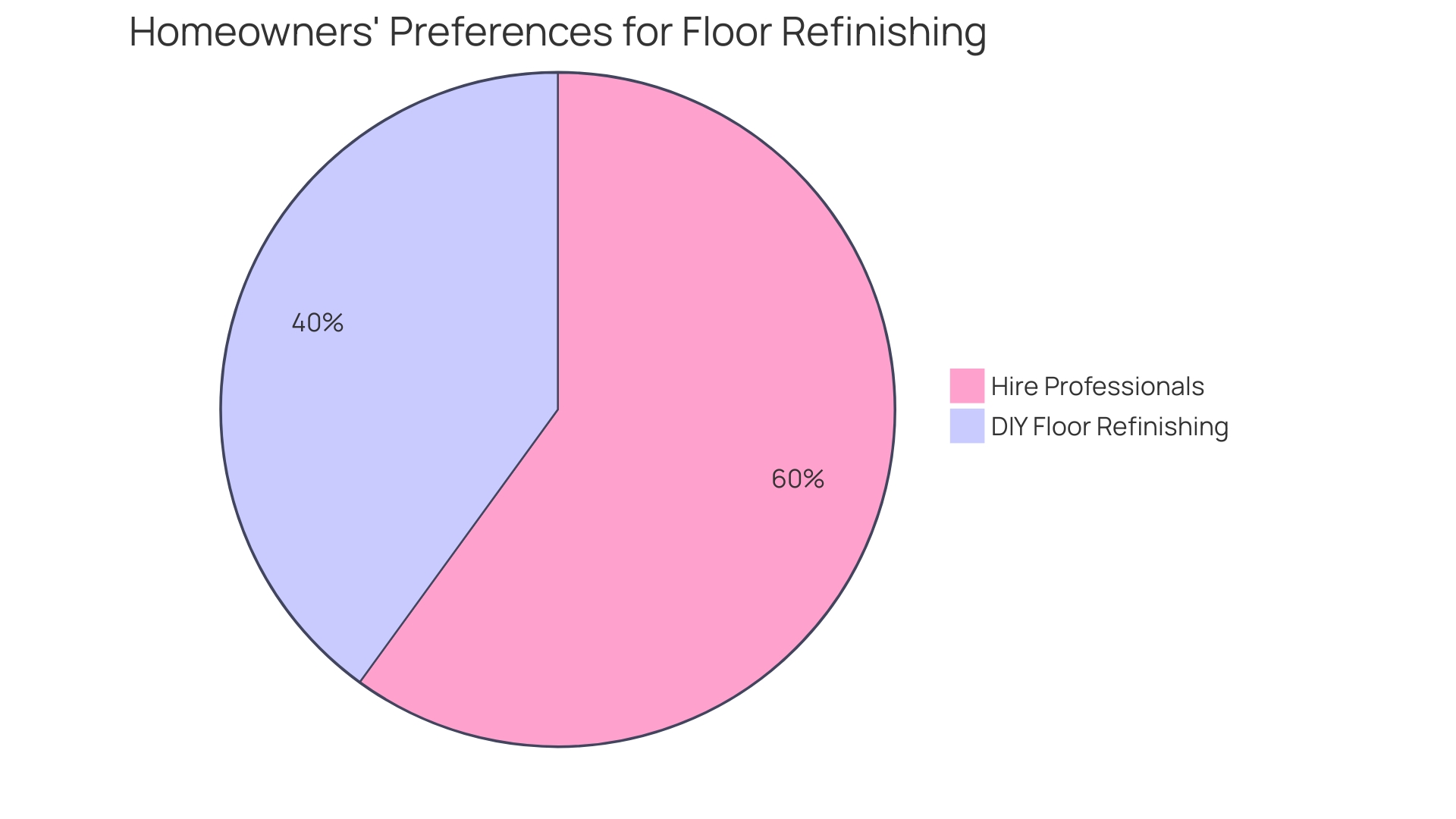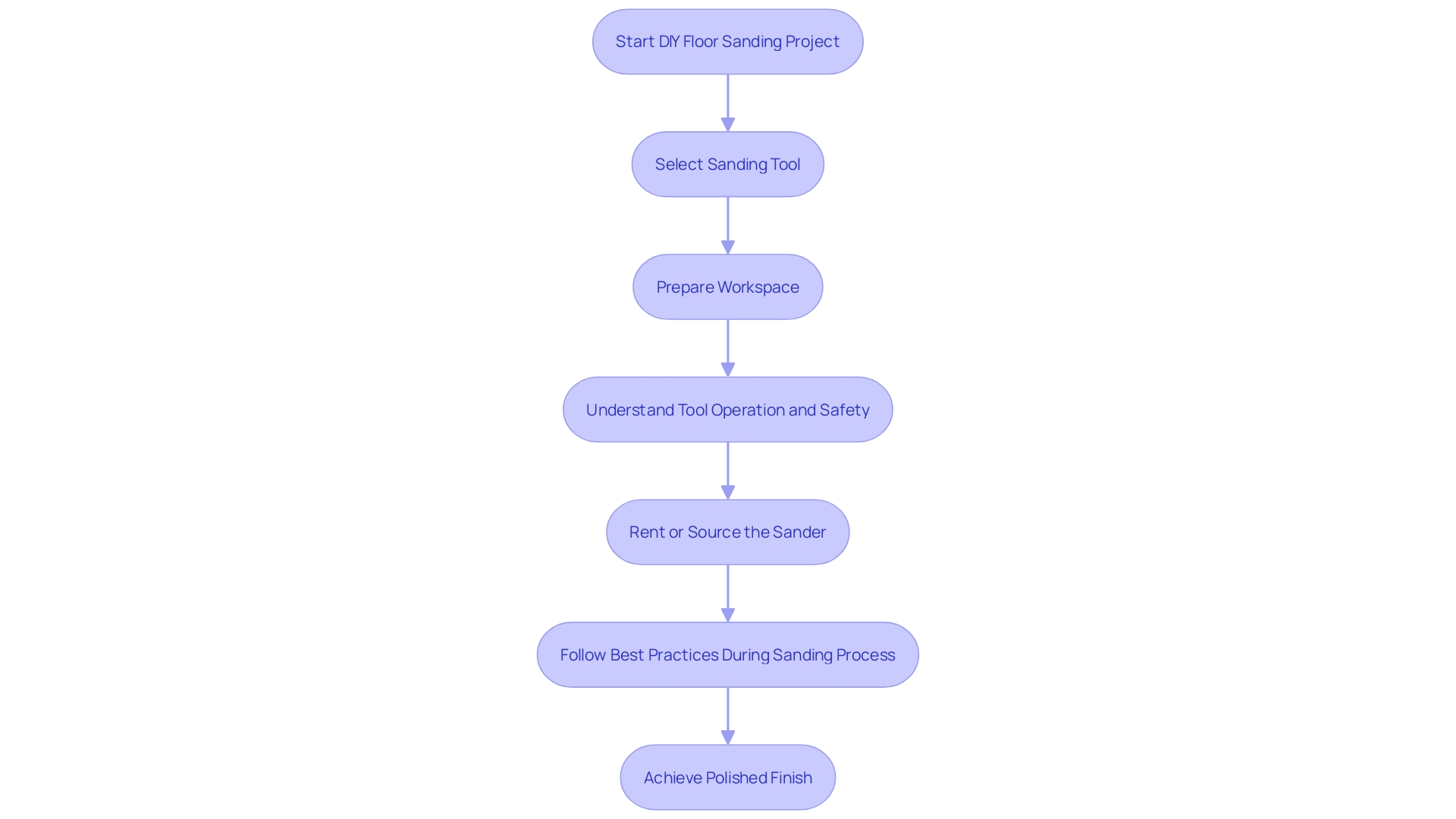Introduction
Refinishing hardwood floors can be a daunting task, but renting the right floor sander can make all the difference. With various types of sanders available, understanding their specific functions is essential to ensure your project’s success. From the powerful drum sander for extensive refinishing to the precise orbital sander for detailed work, choosing the right equipment can significantly enhance your results.
Additionally, considering the cost factors, including rental fees and additional expenses like consumables and insurance, can help you manage your budget effectively. Deciding between a DIY approach and hiring a professional also requires careful consideration of your skills, time, and the complexity of the job. By following expert tips and best practices, you can achieve a polished, professional finish that revitalizes your floors and adds value to your home.
Types of Floor Sanders Available for Rent
Comprehending the various kinds of floor refinishing machines accessible for hire is essential for the achievement of your hardwood and wood flooring endeavors. Drum tools, for instance, are excellent for large areas, capable of removing thick layers of finish efficiently. These robust machines are ideal for major refinishing tasks, providing a smooth, even surface for further treatment. Orbital devices, on the other hand, are more gentle, making them suitable for refinishing tasks that require a lighter touch. They are perfect for detailed work where precision is key. Edge machines are specifically crafted to access corners and edges that larger devices cannot reach, ensuring no section of your surface is left untreated. Each kind of sanding tool serves a unique purpose, and choosing the right one can significantly enhance the quality and efficiency of your refinishing project, ultimately saving you time and resources.
Cost Factors in Renting a Floor Sander
Rental expenses for floor refinishing machines can differ significantly because of various factors. The type of sander you choose plays a significant role, with drum sanders typically costing more than orbital sanders. The length of the lease is another key factor; extended agreements often come with discounted daily rates. Local market rates can also impact pricing, with urban areas generally seeing higher costs than rural ones. Additionally, the condition and brand of the equipment can influence the leasing price. For instance, high-end brands and well-maintained machines might come at a premium. Comparing rates from various leasing companies is crucial, and it’s essential to consider any included accessories, such as sandpaper, which can add to the overall cost.

Rental Duration and Pricing
Rental pricing for floor and deck sanders is typically based on how long you need the equipment. Most leasing companies provide daily, weekly, and occasionally monthly rates. For short-term assignments, daily fees might seem economical, but if you expect a longer task, weekly charges can often save you more cash. Grasping and organizing your project's timeline is crucial to identify the most cost-effective leasing duration.
Additional Costs and Considerations
When thinking about leasing a floor sander, it's important to account for additional costs beyond the base fee. These can include charges for consumables like sandpaper and pads. Some rental companies may also require a security deposit or offer insurance options to cover potential damages. To avoid unexpected expenses, it's advisable to inquire about all possible fees upfront. According to industry experts, understanding and planning for these extra costs can significantly impact the overall budget and ensure a smoother project execution.

Choosing Between DIY and Professional Refinishing
Choosing between DIY floor refinishing and hiring a professional can have a profound impact on both your budget and the final outcome. While renting a sander might seem like a cost-saving option, it demands considerable time, skill, and effort. 'DIY tasks are indeed a fantastic way to personalize your living space and potentially increase your home's value, but they require a solid understanding of the materials and the task scope.'. For instance, The Home Depot and Lowe’s have been popular choices among home improvement enthusiasts for sourcing materials and tools. However, the quality of your results will heavily depend on your experience level and the complexity of the work involved.
On the other hand, hiring a professional can ensure a polished finish, especially for intricate jobs. Experts often have portfolios or references showcasing their previous work, which can be a crucial factor in your decision-making process. Additionally, if you’re considering refinishing antique wood, professionals can provide examples of their work and explain the protective measures they employ to prevent damage.
According to industry reports, home maintenance costs have risen significantly, with the average homeowner spending closer to the higher end of the 1% to 4% range of their home's value annually. Thumbtack's recent data highlights an 8.5% rise in home maintenance expenses year over year, reflecting the increasing financial attention in these endeavors. Consequently, it’s crucial to assess the advantages and disadvantages according to your particular requirements, task complexity, and intended outcomes.

Tips for Successful DIY Floor Sander Rental
To achieve a polished finish in your DIY floor sanding project, start by selecting the right type of sanding tool for your flooring. Various types of sanding machines, such as orbital, drum, and belt models, have unique functions, making it essential to comprehend their particular uses. Once you have your sanding tool, prepare your workspace meticulously. Clear out all furniture and thoroughly clean the floors to avoid any debris interfering with the sanding process.
Next, familiarize yourself with the tool’s operation and safety features. This includes understanding how to handle the machine, the correct sanding techniques, and using protective gear like masks and goggles to safeguard against dust and debris. Renting a sander can be a cost-effective solution, with prices typically ranging from $30 to $50 per day for basic models, and higher for professional-grade equipment. Tool libraries or community tool-shares can also be an affordable option if available in your area.
Finally, follow best practices throughout the sanding process. Begin with a coarse grit to remove old finishes and level the surface, then progressively move to finer grits for a smooth, professional finish. Taking your time and working methodically will ensure the best results, making your floor look as good as new.

Conclusion
Refinishing hardwood floors can be a rewarding endeavor, but it requires careful planning and execution. Understanding the different types of floor sanders—such as drum, orbital, and edge sanders—plays a pivotal role in achieving desired results. Each type is designed for specific tasks, and selecting the right one can enhance efficiency and quality, ultimately saving time and resources.
Cost considerations are equally important. Rental fees can vary based on the type of sander, rental duration, and market conditions. It's crucial to compare rates and factor in additional costs, such as consumables and potential security deposits.
By being proactive about budgeting and understanding all associated expenses, unexpected financial burdens can be minimized.
The decision to undertake a DIY project or hire a professional can significantly influence both the outcome and budget. While DIY can be cost-effective and rewarding, it demands a certain level of skill and commitment. Conversely, professionals bring expertise that may be necessary for complex tasks, ensuring a polished finish and potentially protecting the integrity of antique wood.
Finally, following best practices during the sanding process is essential for a successful outcome. Preparation, safety, and adherence to techniques can make a significant difference in achieving a high-quality finish. With the right knowledge and careful planning, refinishing hardwood floors can transform a space and add lasting value to a home.




